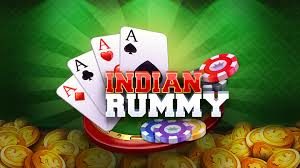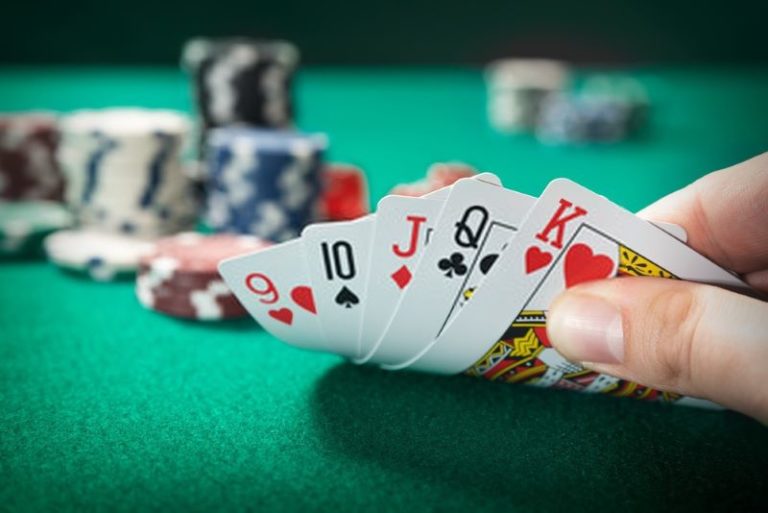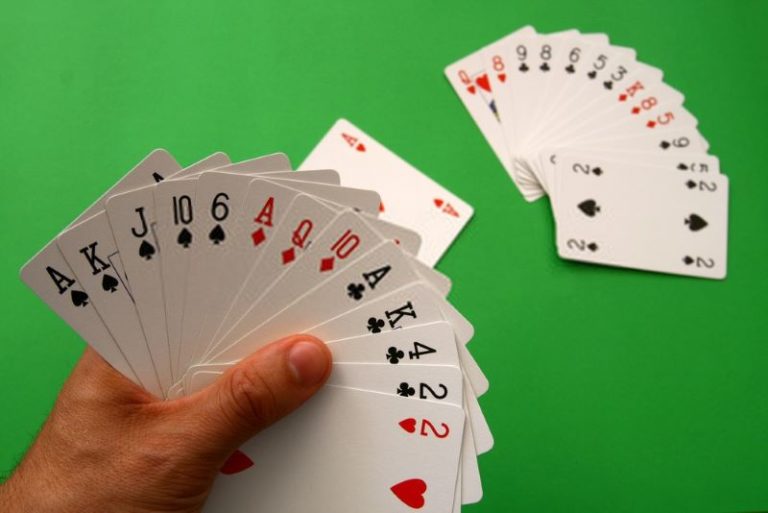Your guide to Indian Rummy
There are several games available for game lovers to enjoy the thrills and excitement that comes with playing such games. Many games also come with game variations. So also is the Rummy game, which is another card game variation. One of the exciting Rummy game variations is the Rummy 500, which can accommodate about two to eight players at a Time.
The Rummy game also has a gin Rummy variation. Between these two Rummy game variation is the Indian Rummy game. The pleasure and fun that you get when you win a game in Indian Rummy are memorable, hence the reason behind the massive popularity of the game.
WELCOME OFFER:
1 LAKH
+ 100% up to ₹600
UPI, Paytm, JioMoney, GPay, PhonePe, Bitcoin, Mastercard and more
*New players only
WELCOME OFFER:
₹500 No Deposit Bonus
100% up to ₹600
UPI, Paytm, JioMoney, GPay, PhonePe, Bitcoin, Mastercard and more
*New players only*
In India, the Indian Rummy game has received wide acceptance and very high playing time both offline and online. It is highly engaging and an experience that gamers would love to enjoy. The game is popular in India, but it has become a gaming sensation in many other countries from around the world.
Indian Rummy is an interesting, engaging, and highly captivating game, also referred to as Paplu. It has several game variants derived from the original classic Rummy game. Playing the game requires a hand comprising of 13 cards to be shared amongst each player. Every game participant has to ensure that they draw and remove the cards until any of the players can arrange their cards successfully.
The cards have to be arranged in the right seats and sequence. In a situation where two players are available for the game, a printed joker and 53 cards deck are used. In an event where you have six players, you can have two different sets of 53 cards combined.
When playing Indian Rummy, two card groups are valid. The first valid group is cards with a consecutive sequence containing the same suit, a minimum of three cards arranged in a particular sequence.
The second group of valid cards is when you have three or four cards with different suits bt similar value. Such a group of cards is often referred to as a set. The minimum requirement to win a game when playing Indian Rummy is to form not less than two sequences, with one being a pure card sequence.
WELCOME OFFER:
Play the Biggest Lottery Games
UPI, Paytm, JioMoney, GPay, PhonePe, Bitcoin, Mastercard and more
*New players only
Welcome Offer: UPI, Paytm, JioMoney, GPay, PhonePe, Bitcoin, Mastercard and more
up to100%
₹30,000
Welcome Offer: up to100% ₹20,000 UPI, Paytm, JioMoney, GPay, PhonePe, Bitcoin, Mastercard and more New players only.
The objective of Indian Rummy
Like playing a mission-oriented game, the Indian Rummy game has it’s set of objectives that must be met for a player to be declared as the winner of the game. The objective of playing the Indian Rummy game may be similar to that of playing the general type of Rummy.
However, there is a distinction that makes the Indian Rummy game unique and more exciting. Playing the game involves sharing up to 13 cards. The number of cards shared in both games signifies the major difference you can find.

The primary aim of playing the game is for you to be the first player to meld your entire cards into a sequence. As soon as you can get this done, you will have to submit or declare your cards. If you are playing against just one opponent, meaning that you have just two opponents, you will become the winner of that game if after declaring the game and your card sequence is correct.
The other player may be on the losing end. Winning an Indian Rummy game gives you a sense of fulfillment, especially when playing against several other players. However, when playing against a single competitor and you end up declaring your card, which appears to be false when cross-checked, you will automatically lose the game.
In contrast, the other player is declared as the winner. This means that before you declare your cards, you must be certain that they are arranged in the right sequence to avoid losing the game even though the other player may have none of his cards close to being arranged in the right card sequence.
But what happens when more than two players are playing the Indian Rummy game at the same time. The rules at this stage become different. Instead of you to lose the game and another player be declared winner, you will be fined an 80 points deduction if your card submission happens to be out of sequence. Deducting 80 points from the total number of points allotted to you does a whole lot of damage to your point build-up, hence the more reason why you need to be extra careful before you tender your card results.
How does the point deduction affect you in the long run when playing Indian Rummy. Points are used to rank each player’s position, especially when many players are playing at the same time. If a player eventually declares cards with the right sequence and set, the points of each of the players will be used to identify the player that finishes in second, third, and so on, till the player that finishes last is determined.
Players need to understand the rules governing the Indian Rummy game. These rules may help assist you in winning a game. They also allow players to enjoy the thrills and fun that comes with playing the game. Before you set out to play Indian Rummy with friends or other competitors, you should know the maximum as well as the least number of players that can participate in the game at a particular time. These are part of the rules governing the Indian Rummy game.
The minimum number of players that can play the game at a particular time is two while the number of players must not exceed six. The number of card decks shared in each game differs according to the number of players playing the game. Only two cards decks may be shared when you have just two players playing the Indian Rummy game at a particular time.
However, if the number of players is more than two, then three card decks are to be distributed among all the players. Therefore, there will be thirteen cards to be provided to each player by the start of the game. Players can meld their cards into sequences or sets that are valid by switching their cards with closed or open decks.

WHAT IS THE MEANING OF SEQUENCE AND SET WHEN PLAYING INDIAN RUMMY?
In the Indian Rummy game, a set is a term that is used to represent a situation where a player has not less than three cards showing the same letter even though their symbols may be different. To illustrate this, let us say a player has a heart card symbol with the letter A. The same player has a club card symbol with the letter A and a spade card symbol also displaying the letter A.
A player is said to have a card sequence if the number found in three or more of his cards with the same symbol or suit appears in a sequence. Lets us take, for example, a player has the card numbers 2,3,4 displayed in a card with the diamond symbol. If a player tenders such cards, he may be declared the winner of the game since the cards are said to be arranged in a sequence.
As part of the Indian Rummy game rules, you cannot have more than four cards in a set. The reason us because there are only four types of suits in a card deck. Every set must have at least one club suit, one diamond suit, one heart, and one spade suit. With that said, you can only have about three or four suits in a particular set when playing the Indian Rummy game.
When playing the game, each of the participating players can switch a card that is most different from the cards available in his card set. This is done with the probability of picking a card that can form a sequence along the line with the other cards available to him.
DIFFERENTIATING BETWEEN IMPURE AND PURE CARD SEQUENCE
When playing Indian Rummy, there are two different categories of card sequence. These sequence types are referred to as impure and pure card sequence. When you have a similar card arranged in numbers that follows a particular sequence in the same card suit, you are said to have a pure sequence of card arrangement. An example of a pure card sequence is a card showing the numbers 2,3,4,5 in the diamond suit.
As stated earlier, you must have no more than three cards to make up a pure sequence. In the case of an impure sequence, your sequential card numbers can exceed three. How is it possible you may want to ask? For an impure sequence, you may add a joker or a wild card to form a particular number that is missing in your sequence.
Let us say you have the numbers 3, 4, and 5. You can use your joker to replace the missing number that can complete the sequence. In this case, the missing sequence number is 4. In the aspect of using a wild joker, let us take, for example, you have the number 8 containing a diamond suit. It was selected as a wild joker.
You can replace or switch the number 8 as the missing number if you have a card with a single number to complete the sequence, especially if the cards all have the same suit. What we have just illustrated is referred to as an impure sequence.

Different Indian Rummy Versions
The Indian Rummy game is designed to offer players very interesting gaming experience. Gamers can select from different versions of the game whether or not they are playing online or offline. The game comes with a 13 –card version, which means that each participating player has to be given 13 cards to ensure that the game is seamless and goes according to the rules.
A 21 card Indian Rummy version is also available for players. As part of ensuring dynamism in the gameplay, gamers can also enjoy an Indian Rummy Version of 10 cards. Whatever version of the Indian Rummy game you are playing, ensure that you follow the game rules to make it fair for every participating player.
If you do not know the rules of the Indian Rummy game, not to worry, we shall give you a summary of the rules to be followed when playing Indian Rummy.
Commonly used words when playing Indian Rummy
A joker may come in two separate forms. It can either be a printed Joker or a Wild. A printed joker is when the card has a Joker printed on it. You can easily identify a Printed Joker and then use it to select any number or letter you wish to complete a particular sequence or set.
On the other hand, a wild Joker does not carry the symbol of a joker, but it is a wild that is selected to function as a joker. You can use a wild joker as a replacement for another number or letter to make up your card sequence just the same way printed joker functions.
- Game points
In several games, attaining points may be great as it puts you in an advantage to complete a game. The same thing applies to play the Indian Rummy game. Game points are used in a scenario where you have more than two players participating in the game. Each player is awarded points as the game progresses.
When a player declares or submits a card sequence or set that is valid, it is declared the winner of the game. To rank the other players, the total number of points they can get while playing is used.
In the Indian Rummy game with 13 cards per player, a player cannot get more than 80 points no matter the value of cards they have.
- False or Wrong Declaration
Declaring a valid card sequence or set signifies the end of the game and the emergence of a winner. However, what happens when the card set or sequence you submit is wrong? There is a penalty for declaring the wrong cards. A total of 80 points will be deducted from you.
But if just two players play the game, a wrong declaration means that you have automatically lost the game. Your opponent becomes the winner whether or not he has a valid card sequence or set.
- First Drop
A first drop refers to a situation where a player is awarded 20 additional points if she drops out of the Indian Rummy game without picking any card in her first turn.
- Leave the table
When a player leaves the table after picking a card, that player is given a total of 40 points. These points are used to rank players at the end of the game.
- Middle Drop
Unlike the first drop, a player is offered 40 points if he drops out of the game after he must have had the first turn.
- Losing players that have a valid card sequence or set
There is a penalty for declaring a hand after another player has already declared a valid hand. The defaulting player is given two points. Whether the card sequence or set in your hand is valid, you will lose by extra two points if you declare your hand, knowing fully when that an opposing player has already done so.
- Deadwood
Deadwood refers to those cards that cannot be a part of a sequence or set. They have little or no impact in determining if a player will end up with a valid hand.
- Consecutive Misses
Consecutive misses is when a player is said to lose a game round because he has missed his turns three times consecutively.
- Drop
The term Drop is used to indicate when a player drops out of or leaves a game
- Shuffle
Card shuffling is a vital part of the Indian Rummy game. The cards have to be shuffled properly to ensure that there is no form of bias or favoritism. It also makes room for chance and luck to be the deciding who gets a particular card.
- Discard
Discarding a card while playing Indian Rummy refers to a situation where a player picks a particular card and discard the card to the open deck or discard pile.
- Count
Count refers to the sum of deadwood points in a player’s hand.

RULES OF THE INDIAN RUMMY GAME
Before you can fully understand the game rules, you need to be conversant with keywords used when playing the game.
We have explained what most of these terminologies are. To ensure that win an Indian Rummy game far and square, do not incur consecutive misses to avoid losing your turns. Do not be too excited to declare your cards even though they may be valid when another player has successfully done so.
You must avoid false card declaration as that may cause you to lose the game (for two players), or you end up getting additional 80 points, which may reduce your ranking at the end of the game.
How you can play Indian Rummy
As earlier mentioned, a maximum of 6 players can play the Indian Rummy game. In a situation where there are over two players, two card decks are used, and each player gets 13 cards.
The player has to ensure that cards have to be arranged in sets or sequences. After the cards have been dealt with by all participating players, the open card deck is formed. This is done by selecting the card that is first among the other cards not dealt with players.
The selected card is faced upwards. The Closed deck is formed from the remaining cards after the card forming the open deck has been selected.
Tips and Tricks in Indian Rummy
Playing a game is very interesting, but it makes it even more thrilling when you can apply some tricks. Well, there are some tricks to playing the Indian Rummy game. When pulling off these tricks, ensure that you do not break the rules or be given some points. We shall identify two of them.
- Trick One
As a player, you are dealt 13 cards, and your primary objective is to arrange your cards in sets or sequence. You can select a card from the open card or closed card deck and then discard a card to the closed card deck. You can do this on each of turn. By closely monitoring the cards that are discarded to the closed deck by your opponent, you can guess it in your opponent’s hand.
- Trick Two
Another trick you can use when playing the Indian Rummy game is to discard those cards with high values. You can also discard those cards that are positioned close to the joker before you discard others. Whether or not the cards in your hand are fairly good, always ensure that high-value cards are discarded first. Cards with a high value increase your points, so you have to get rid of them in your first moves. Cards close to the joker have a lesser potential in helping you arrange a sequence or set.
Conclusion
The Indian Rummy game is one that many people find interesting. People enjoy the game both in India and in different countries from around the world. The rules are straightforward, which makes it easy for anyone to learn.
Ensure that you understand the terminologies used in playing the game so that you will avoid making errors that could lead to a points deduction. You can enjoy the Indian Rummy game with friends or test your strength with other competitors online.
















